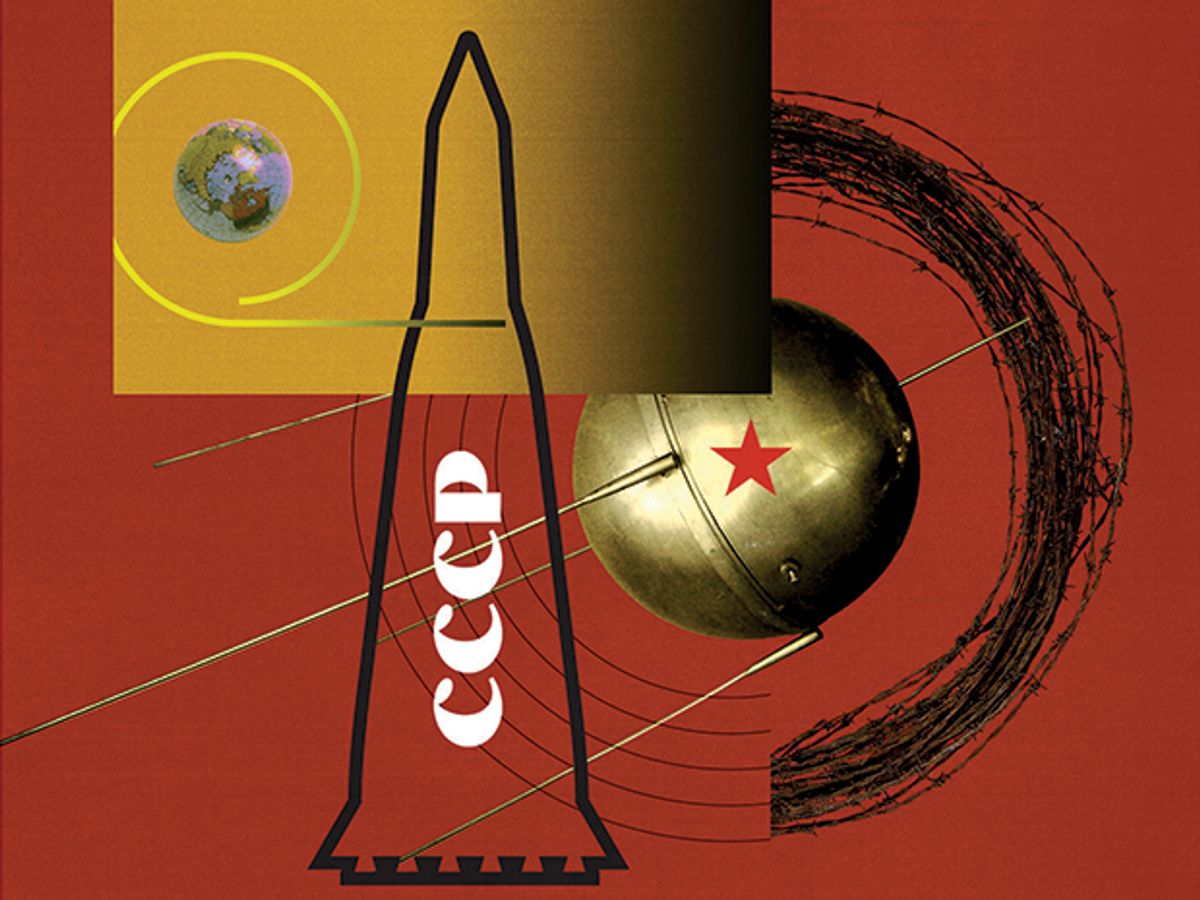Sixty years ago, on Friday, 4 October 1957, the Soviet Union launched Sputnik 1, the first artificial satellite. Technically, it was a modest affair, a sphere 58 centimeters in diameter weighing almost 84 kilograms and sprouting four rodlike aerials. Although its three silver-zinc batteries made up some 60 percent of the total mass, they rated only 1 watt, good enough to broadcast rapid shrill beeps at 20.007 and 40.002 megahertz for three weeks. The satellite circled the planet 1,440 times before plunging to a fiery death on 4 January 1958.
Sputnik should have come as no surprise. Both the Soviets and the United States had revealed their intent to launch orbiting satellites during the International Geophysical Year (1957–1958), and the Soviets had even published some technical details before the launch. In retrospect, it’s fair to call Sputnik just the inevitable first act in a long-running show. But that was not how the public perceived the little beeping sphere in late 1957.
The Western world reacted with awe, the United States with embarrassment. And the embarrassment only deepened in December, when the Vanguard TV3 rocket, its launch hastily scheduled to counter the Sputnik effect, blew up on the launching pad just 2 seconds after liftoff. Members of the Soviet delegation to the United Nations asked their U.S. counterparts whether they would like to receive technical assistance under the Soviet program for undeveloped countries.
This public humbling led to calls for accelerating the country’s space program, for erasing the perceived technical lag, and for boosting education in mathematics and science. The shock that the U.S. school system received was perhaps the greatest in its history.
All this had great personal significance for me. In October 1957 I was a teenager in Czechoslovakia, and every day, when I walked to school, I looked into West Germany, inaccessible behind barbed wire and mine fields. It might as well have been a different planet. Soviet premier Nikita Khrushchev had recently told the West, “We will bury you,” and now his boasts about the supremacy of Communist science and engineering were finding support in the United States’ near-panicky reactions. This latest demonstration of Soviet power led many of us to fear that it would not come to an end in time for our generation.
It turned out that there had never been a real scientific or engineering gap: The United States soon gained decisive primacy in launching satellites for communications, weather forecasting, and espionage. Less than a dozen years after the surprise of Sputnik, Neil Armstrong and Buzz Aldrin stood on the moon—a place no Soviet cosmonaut ever reached.
And 11 years after Sputnik, the Soviet empire did weaken, if only temporarily, during the Prague Spring. Even Czechs who were not members of the Communist Party could get passports to travel to the West. So in August 1969, my wife and I landed in New York, just weeks before the borders were closed for another two decades.
In 1975, shortly after we moved from the United States to Canada, the first major exhibition of the newly completed Winnipeg Convention Center showcased the Soviet space program. A full-scale Sputnik model was hung by wires above the main lobby. As I rode the escalator and looked up at that shiny sphere, I was transported back to 4 October 1957, when for me the beeping satellite signaled not the glories of engineering and science but fear that Soviet power would go on for the rest of my life.
We made it out, but as the French say, plus ça change, plus c’est la même chose. Today Americans are worrying once again about Russia, this time not about a beeping satellite but about that country’s power to influence the U.S. election process and hack U.S. secrets.
